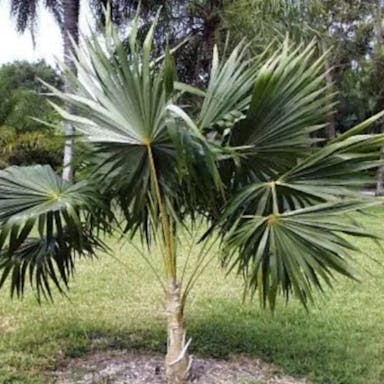Indian-nut, also known as Areca catechu, is a plant that belongs to the family Arecaceae. It is native to the tropical regions of Asia, including India, Malaysia, and the Philippines. The leaves of Areca catechu are pinnate, meaning they are divided into multiple leaflets that are arranged in a feather-like pattern. The fruit of Areca catechu is a drupe, which is a type of fruit that has a hard outer shell and contains a single seed. The fruit is typically orange or red in color when ripe. Areca catechu is commonly cultivated for its nuts, which are known as betel nuts. These nuts have a mild, slightly sweet taste and are often chewed as a stimulant in many Asian cultures. In addition to its cultural significance, Areca catechu is also used in traditional medicine for its various medicinal properties. This plant is relatively easy to grow and can thrive in a variety of soil types, as long as they are well-drained. It prefers a warm and humid climate, and it can tolerate partial shade. Areca catechu is often grown as an ornamental plant in gardens and parks due to its attractive foliage and unique appearance.
0
0












